Umbrella plants and rubber trees have their appeal, but if you’re craving something a bit rarer to add to your houseplant collection, have you considered variegated plants?
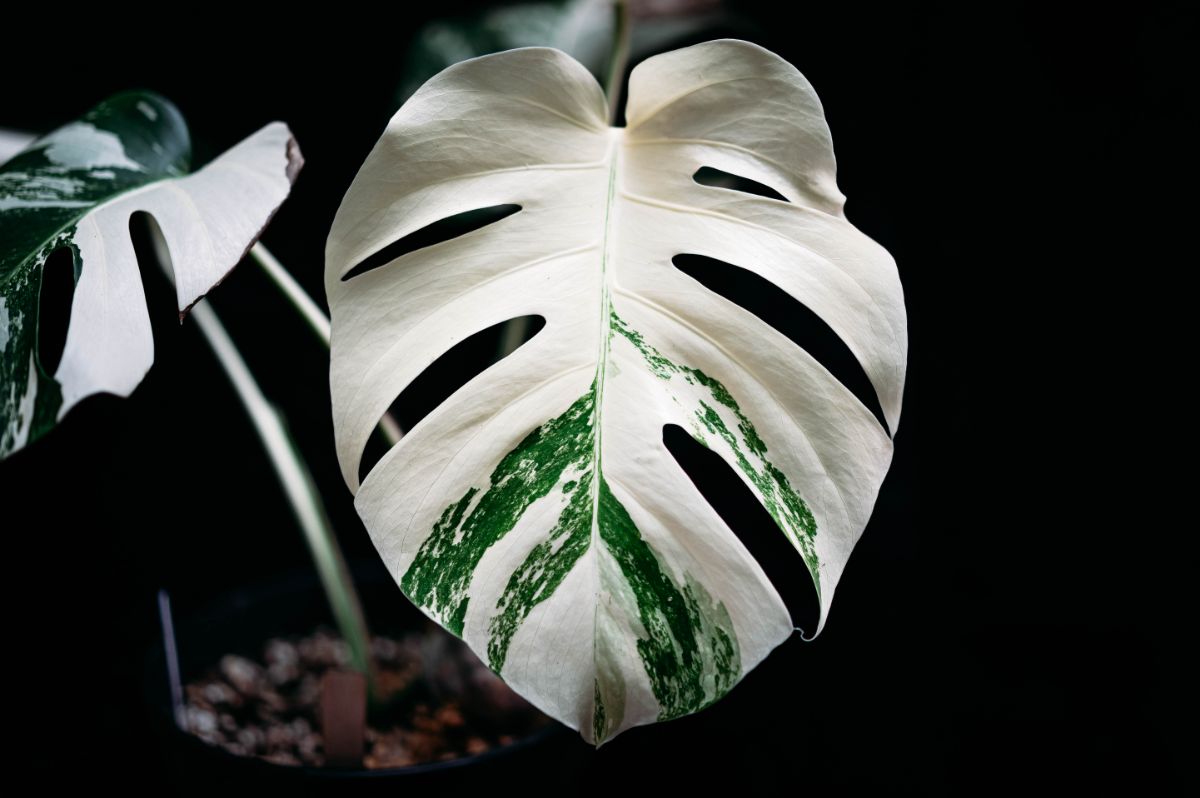
Variegated plants are more colorful versions of their common houseplant cousins, with leaves ornamented in pink, white, and various shades of green. Their leaves will dazzle you and add vibrancy to shelves and tabletop planters.
In this article, we’ll cover some of the most showstopping, rare, and variegated houseplants that are all the rage among collectors today. From monsteras to philodendrons, there are so many exciting new plant varieties to explore!
Jump to:
- 12 Rare Houseplants You’ll Love
- 1. Monstera Deliciosa ‘Thai Constellation’
- 2. Philodendron Erubescens ‘Pink Princess’
- 3. Monstera Deliciosa ‘Albo Variegata’
- 4. Syngonium Podophyllum ‘Red Spot’
- 5. Monstera Adansonii ‘Variegata Archipelago’
- 6. Philodendron Bipennifolium‘Variegata’
- 7. Monstera Deliciosa ‘Aurea Variegata’
- 8. Philodendron Erubescens ‘White Princess’
- 9. Philodendron Billietiae‘Variegata’
- 10. Syngonium Podophyllum ‘Albo Variegatum’
- 11. Calathea Lietzei ‘White Fusion’
- 12. Syngonium Podophyllum‘Milk Confetti’
- Best places to purchase rare plants
- Tips on maintaining variegated plants
- Pests
- Frequently Asked Questions
- Summary
12 Rare Houseplants You’ll Love
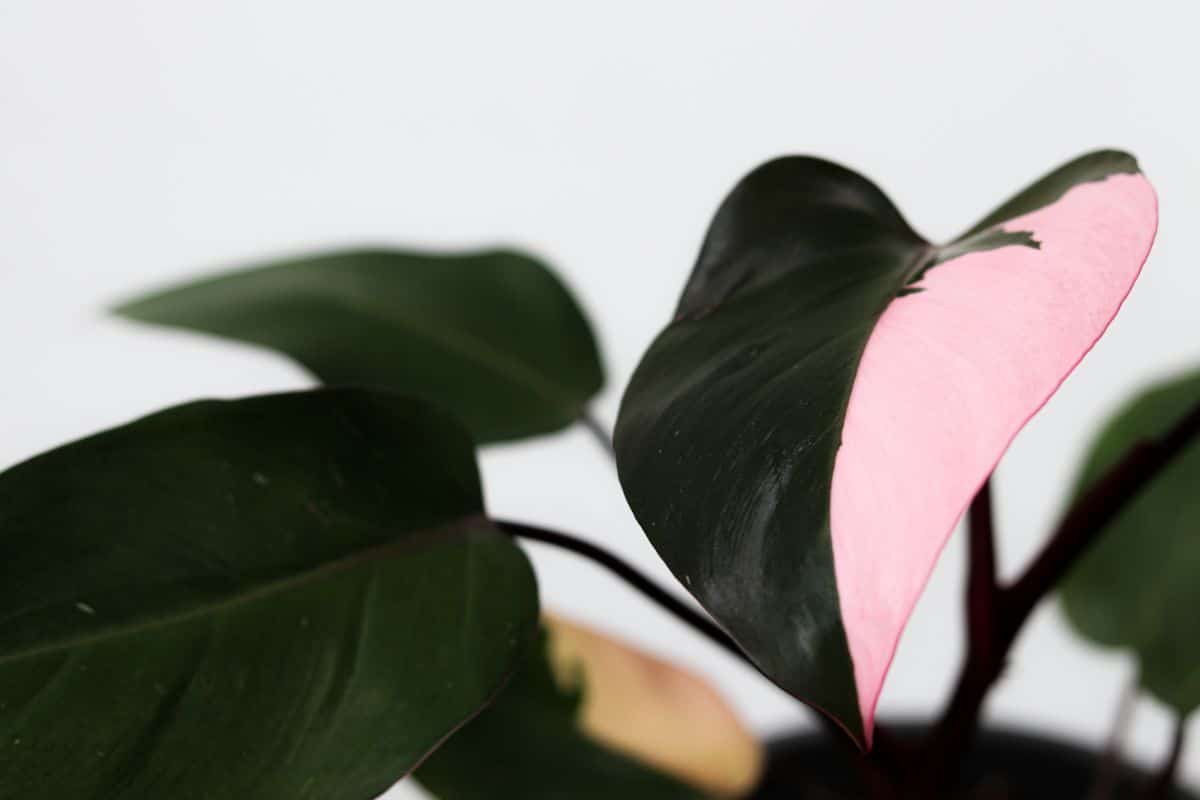
Below are 12 of the most sought-after houseplants on the market today. Collectors go wild for these variegated cultivars, and we think you will soon see why!
1. Monstera Deliciosa ‘Thai Constellation’
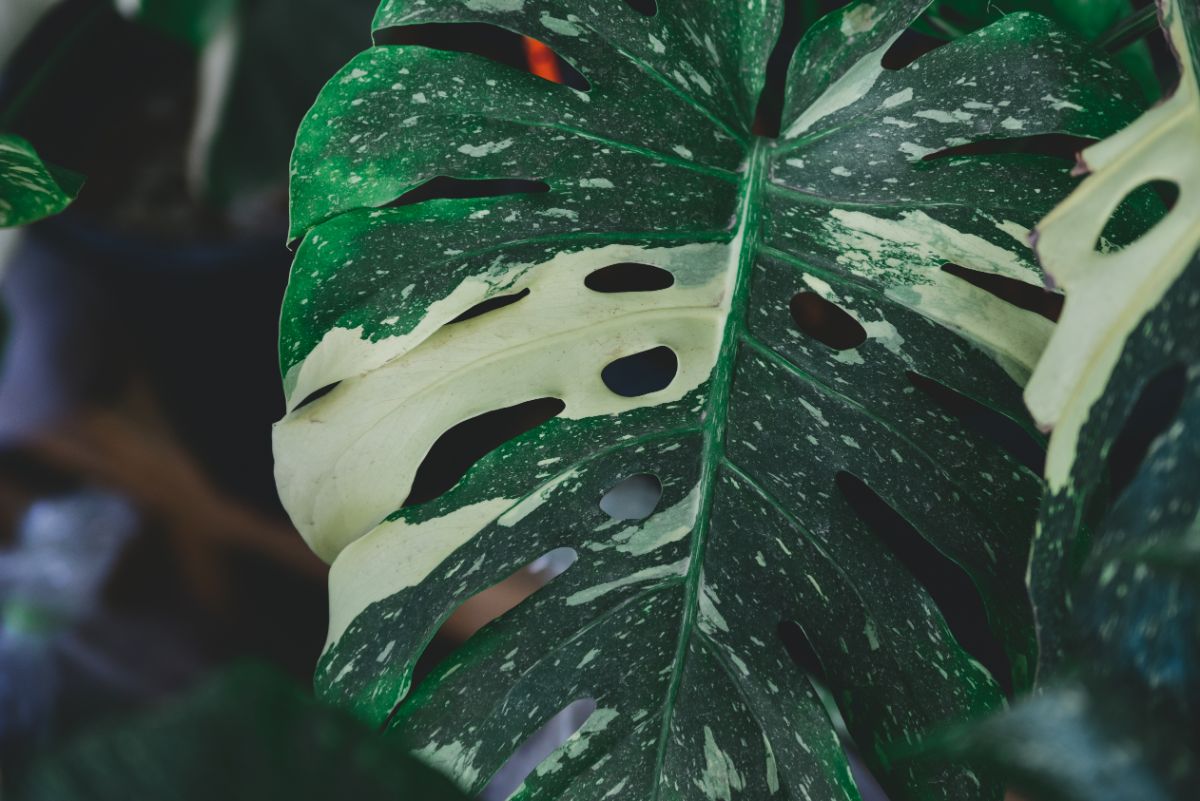
| Plant name: | Monstera Deliciosa ‘Thai Constellation’ |
| Watering requirements: | Moderate, approximately once a week |
| Lighting requirements: | Bright, indirect light |
| Pet safe? | No |
| Average selling price: | $70 to $400 |
One of the most coveted variegated plants on the market today, ‘Thai Constellation’ has everything that plant lovers have come to expect from Monstera deliciosa. It has oversized, glossy, and highly fenestrated leaves, but it’s got even more. Those leaves feature eye-catching variegation with speckles of white adorning the dark green leaf surface, so perfect it is reminiscent of a starry night sky.
First created in a Thai lab, this plant is a slow grower, so you’ll need to have a bit of patience if you want to keep it. Like other monsteras, it can benefit from a moss pole or other support, and it will eventually reach 9 to 12’ high. Leaves have a tendency to pick up dust, so be sure to gently wipe your leaves down from time to time to keep them looking their best.
2. Philodendron Erubescens ‘Pink Princess’
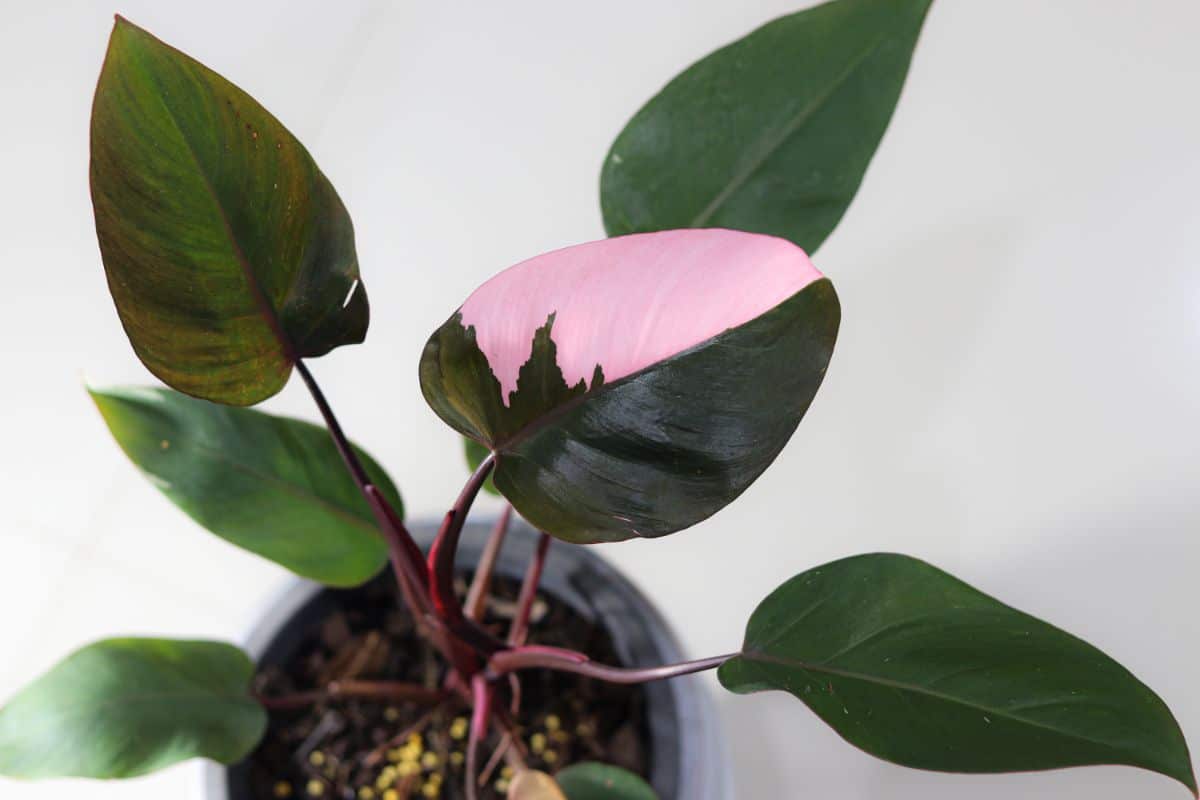
| Plant name: | Philodendron Erubescens ‘Pink Princess’ |
| Watering requirements: | Moderate, approximately once every 7 to 10 days |
| Lighting requirements: | Bright, indirect light |
| Pet safe? | No |
| Average selling price: | $25 to $400 |
Most serious plant collectors will list ‘Pink Princess’ at the top of their must-have list -- if they don’t already have one! A colorful aroid from the Araceae family, the ‘Pink Princess’ has vibrant, splotchy leaves in warm pink, greens, and browns. A truly vivid plant, leaves are heart-shaped for extra charm, and variegation may vary between leaves, ranging from fine speckles to larger splotches of colors.
Native to Columbia, ‘Pink Princess’ is sometimes sold at local nurseries, but your best bet is to search for it online. Like other variegated plants, this specimen will do best with bright, indirect light, which will support the leaves’ variegation. Extra humidity is also recommended if you want to keep this plant, so plan on picking up a humidifier or adding a pebble tray beneath your plant’s pot.
3. Monstera Deliciosa ‘Albo Variegata’
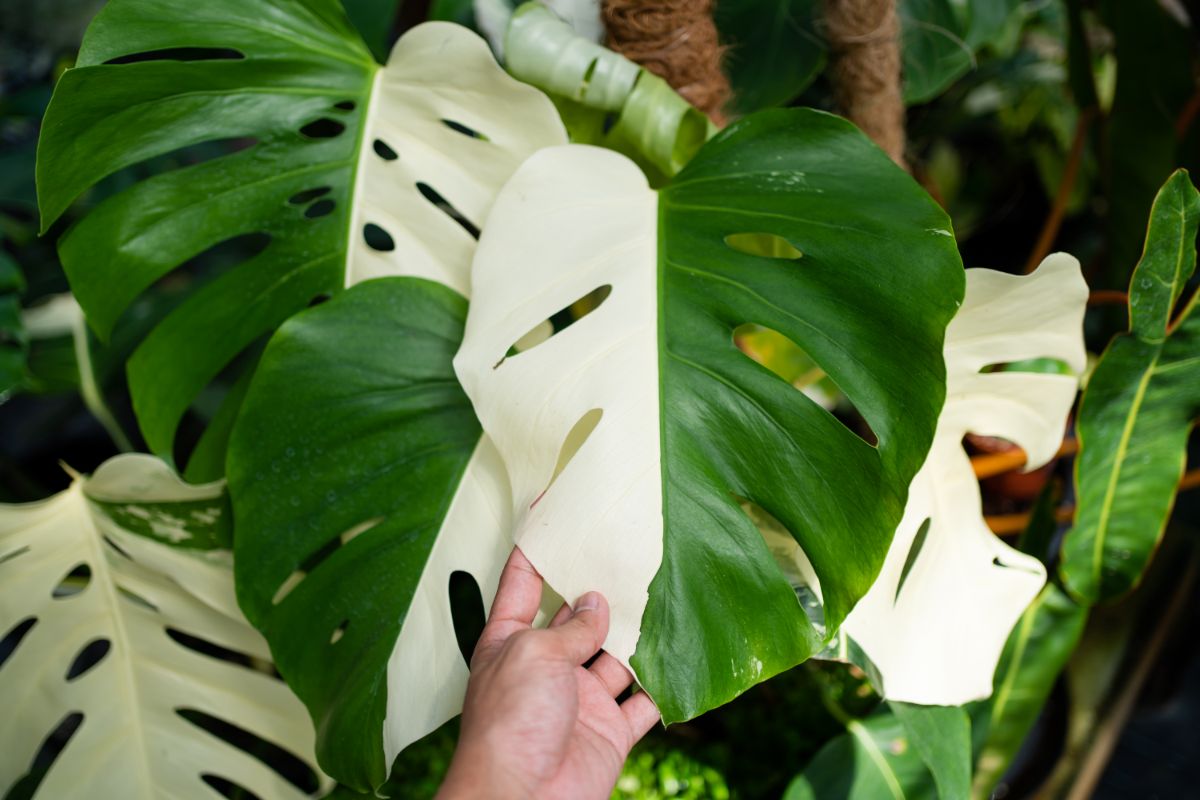
| Plant name: | Monstera Deliciosa ‘Albo Variegata’ |
| Watering requirements: | Moderate, approximately once a week |
| Lighting requirements: | Bright, indirect light |
| Pet safe? | No |
| Average selling price: | $40 to $250 |
Also known as the half-moon monstera, Albo can look a bit like the ‘Thai Constellation’; however, leaves have much more white variegation. In fact, Albo has even less chlorophyll than other monstera varieties, which can result in completely white leaves or leaf halves that have turned completely white. This creamy white variegation really sets the darker green leaves off, creating a look that is truly impressive.
Variegation can take some time to develop, and this plant (like other monsteras) grows a bit slow, so have patience. Like other monsteras, fenestration appears on more mature leaves, and the long stems and heavy growth can benefit from some extra support. Once mature, Albos can grow between 12 and 13’ in height.
4. Syngonium Podophyllum ‘Red Spot’
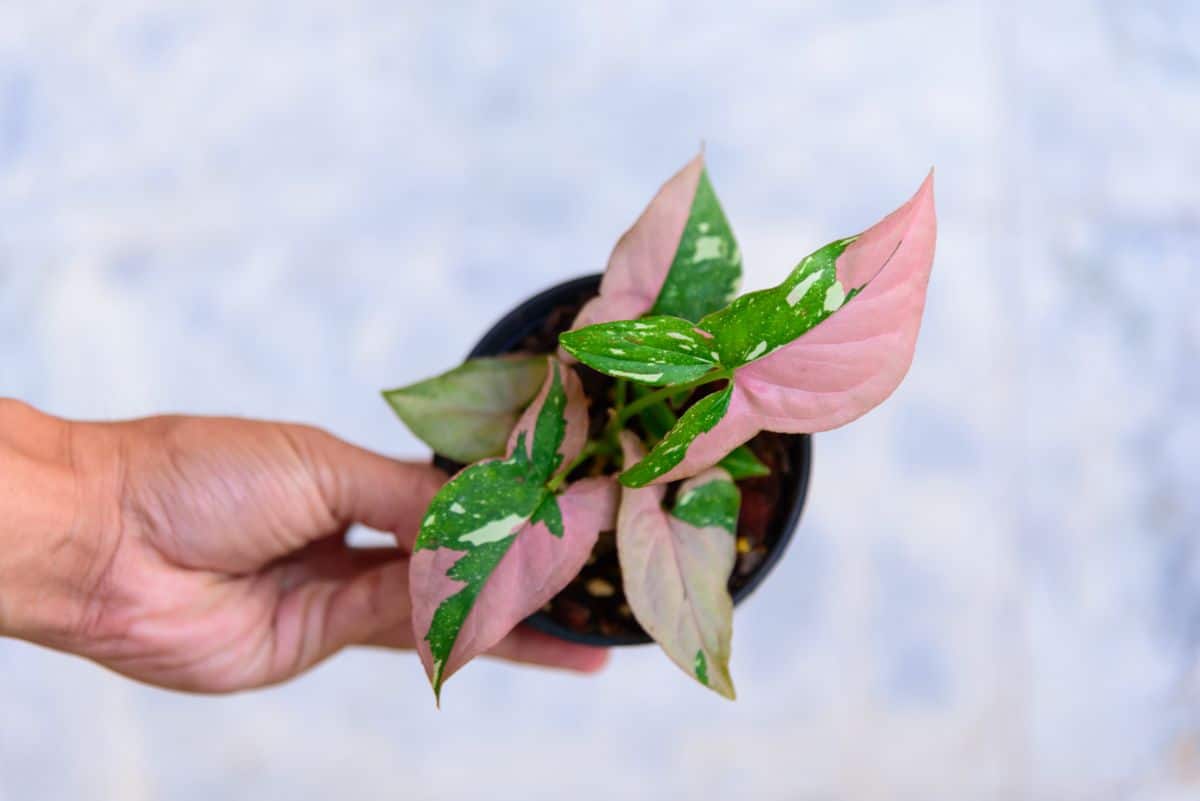
| Plant name: | Syngonium Podophyllum ‘Red Spot’ |
| Watering requirements: | Moderate, approximately once a week in spring and summer, and once every 10 to 14 days in fall and winter |
| Lighting requirements: | Bright, indirect light |
| Pet safe? | No |
| Average selling price: | $50 to $400 |
‘Red Spot,’ also known as the Tricolor Arrowhead Plant,’ is a unique and colorful spin on the common arrowhead vine. While arrowheads are prized for their easygoing nature and delightful, arrow-shaped leaves, ‘Red Spot’ offers even more brightly colored, variegated leaves. Those leaves feature a bright green and white variegation patterning that is highlighted with splotches of a warm, dusty rose color for a truly eye-catching look.
Native to Brazil and Mexico, ‘Red Spot’ can grow up to 2’ high. It is also a fast grower and can get rather unruly if allowed to go wild. So, if you prefer a tidier look, try trellising your ‘Red Spot’ with a moss pole or keep it well pruned.
5. Monstera Adansonii ‘Variegata Archipelago’
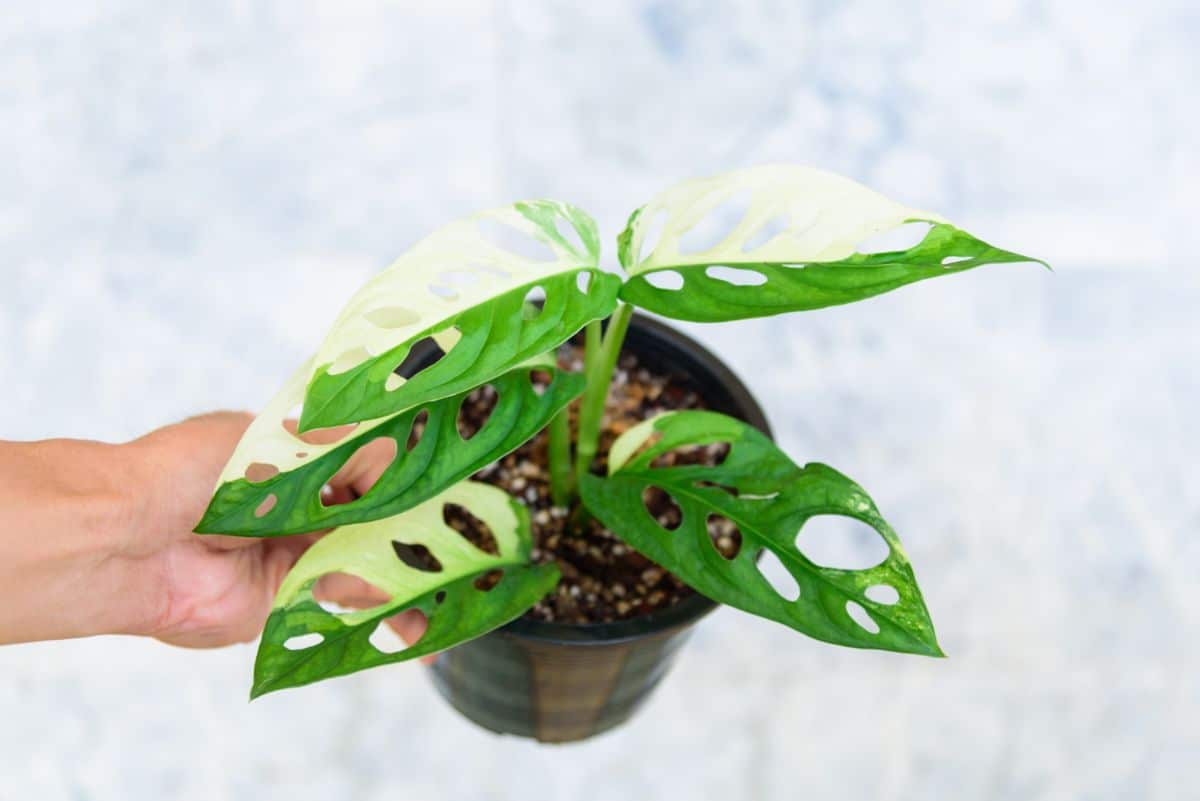
| Plant name: | Monstera Adansonii ‘Variegata Archipelago’ |
| Watering requirements: | Moderate, approximately once a week |
| Lighting requirements: | Bright, indirect light |
| Pet safe? | No |
| Average selling price: | $100 to $400 |
Monstera adansonii is often confused with Monstera obliqua; however, adansonii have thicker leaves with fewer holes. The variegated version is much rarer than the common solid green plant, with price and rarity based on the amount of variegation in an individual plant’s leaves. Leaves may be flecked with white, half-white, or all-white, with white leaves being the rarest and thus priciest.
Sometimes known as the ‘Monkey Leaf’ monstera, this plant can grow between 3 and 6’ tall. Leaves can be trellised or allowed to cascade gently from the plant’s pot, depending on your tastes. But, for healthier plants, try to maintain a humidity level of at least 50% near your plant.
6. Philodendron Bipennifolium‘Variegata’
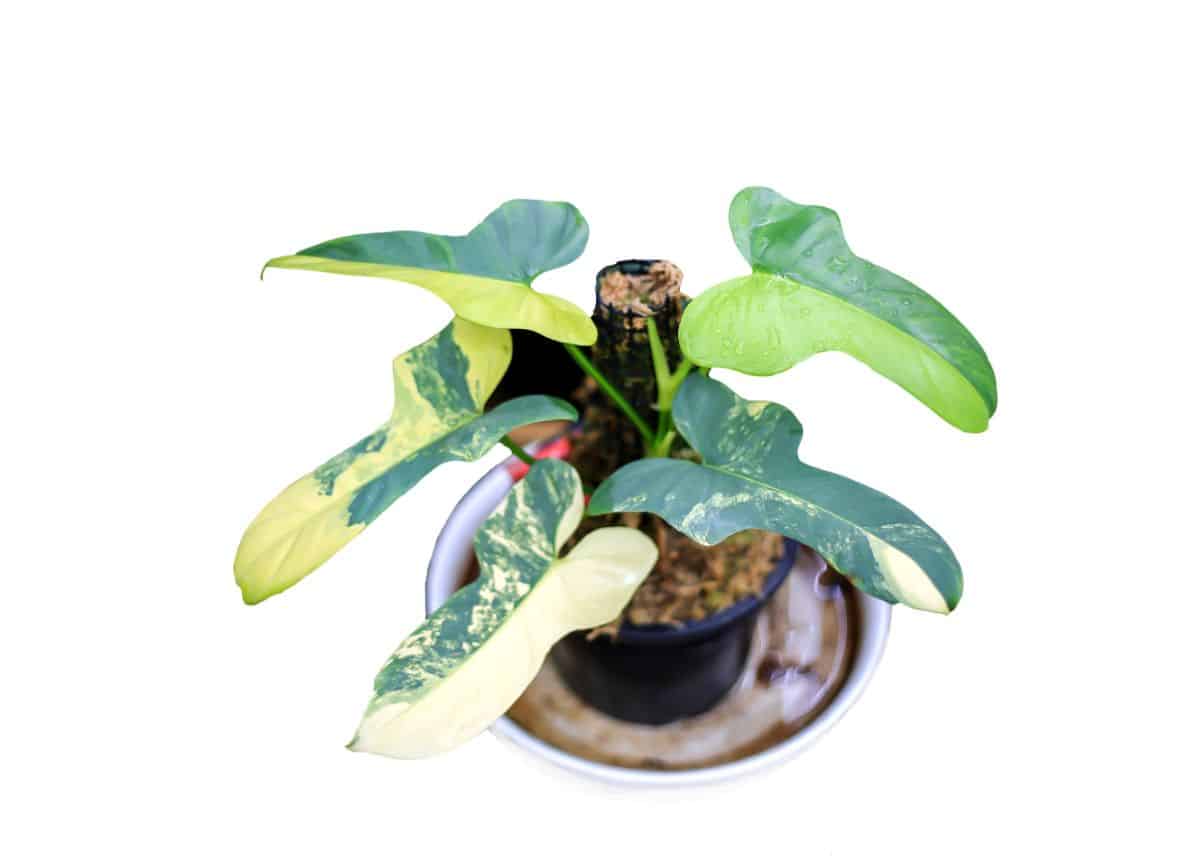
| Plant name: | Philodendron Bipennifolium ‘Variegata’ |
| Watering requirements: | Moderate, approximately once every 7 to 10 days |
| Lighting requirements: | Bright, indirect light |
| Pet safe? | No |
| Average selling price: | $150 to $600 |
Also known as the variegated ‘Fiddle Leaf’ philodendron, this rare plant may be difficult to find, but it is well worth the hunt. Leaves are triangular and glossy with a slightly leathery feel, but what really makes this plant stand out is its stunning variegation. Leaves feature a mix of dark green with lighter speckles of light green and yellow; however, some plants may have larger patches of variegation.
If you buy a younger plant, don’t be surprised if the leaves look a bit different. This philodendron starts off with oval-shaped leaves, which become pointier as they mature. Full-grown specimens of this plant can reach between 4 and 5’ in height.
7. Monstera Deliciosa ‘Aurea Variegata’
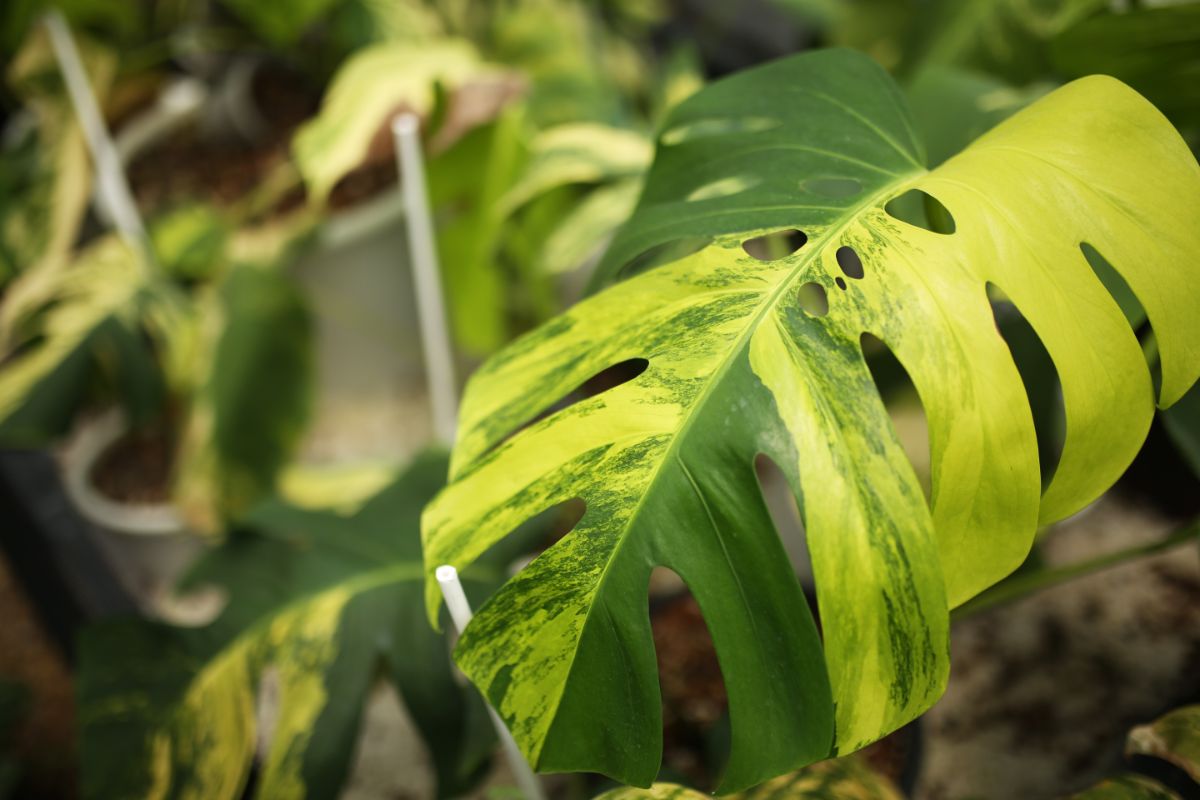
| Plant name: | Monstera Deliciosa ‘Aurea Variegata’ |
| Watering requirements: | Moderate, approximately once a week |
| Lighting requirements: | Bright, indirect light |
| Pet safe? | No |
| Average selling price: | $150 to $500 |
One of the rarest monsteras around ‘Aurea’ has very colorful leaves featuring a mix of golden-yellow and green variegation. Leaves are glossy and oversized and, like typical monsteras, they develop more fenestration as they mature. Like other monsteras, this plant will grow quite large as it ages, so try trellising if you don’t want it to take over.
As is the case with many other plants on this list, ‘Aurea’ is not produced on a large scale, so you probably won’t be able to find it in stores. Your best bet is to pick up a cutting from a private collection or purchase the plant online from websites like Etsy. And, of course, the bigger and more variegated the plant, the more expensive it will be.
8. Philodendron Erubescens ‘White Princess’

| Plant name: | Philodendron Erubescens ‘White Princess’ |
| Watering requirements: | Moderate, approximately once every 7 to 10 days |
| Lighting requirements: | Bright, indirect light |
| Pet safe? | No |
| Average selling price: | $30 to $75 |
Native to the tropical forests of Columbia, ‘White Princess’ is another colorful option if you’re looking for a new plant for your collection. The glossy leaves are heart-shaped with tapering tips and are ornamented with speckles and patches of medium green and bright white coloring. A fast grower, ‘White Princess’ will grow to about 8’ in size when mature.
Maintaining proper humidity levels around ‘White Princess’ is key for its growth. Humidity will also guarantee your plant’s leaves keep their characteristic sheen and won’t develop brown, crispy patches.
9. Philodendron Billietiae‘Variegata’
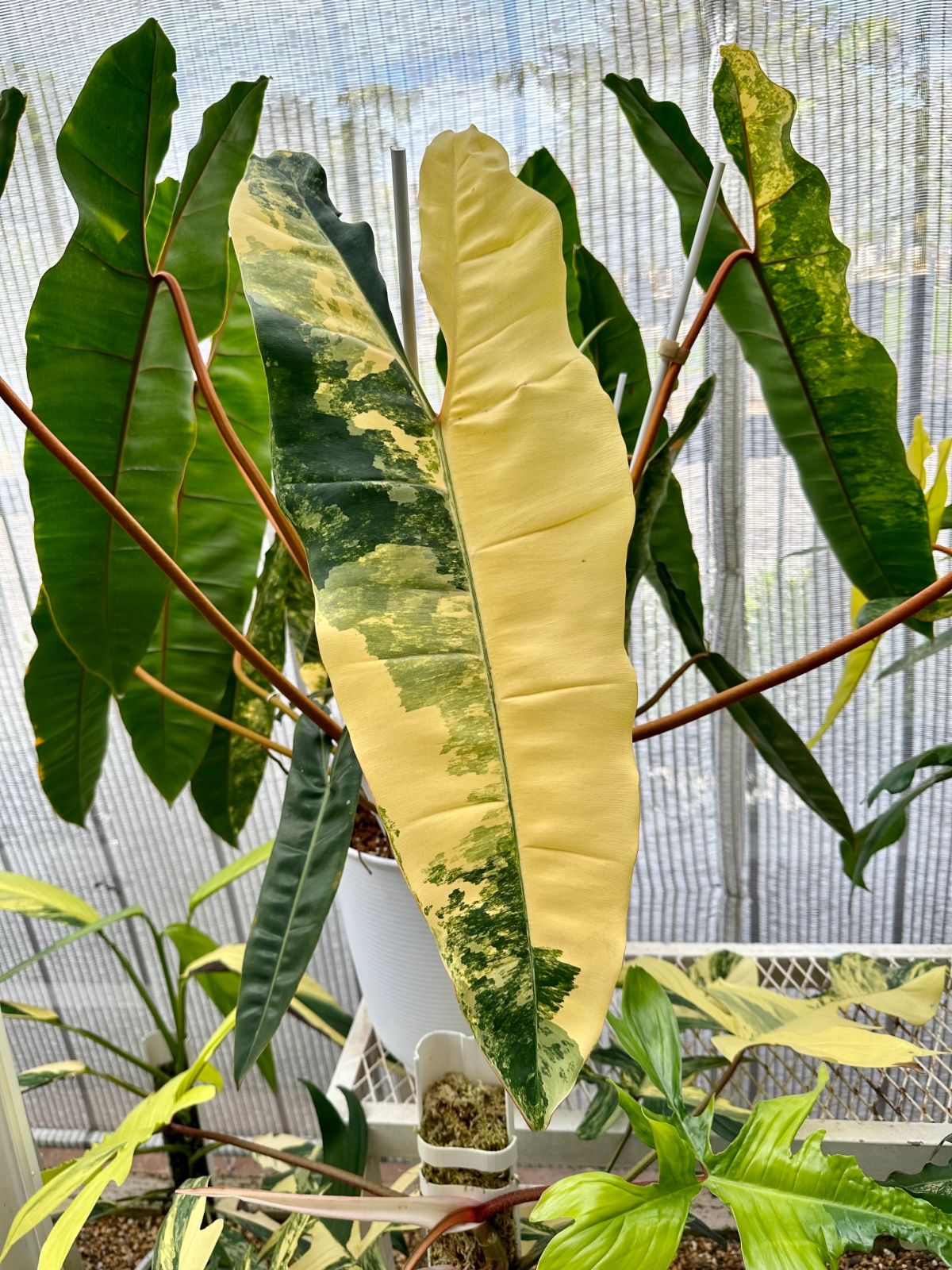
| Plant name: | Philodendron Billietiae ‘Variegata’ |
| Watering requirements: | Moderate, approximately once every 7 to 10 days |
| Lighting requirements: | Bright, indirect light |
| Pet safe? | No |
| Average selling price: | $1,000 to $4,000 |
This plant has a steep price, but if you love rare houseplants, it could be just the choice for you. Famed for its uniquely variegated leaves, leaves are highly patterned in warm yellow and shades of green and extend from deep orange-toned stems. Leaves also have a precious, stretched-out heart shape that is unlike anything else you can find.
Originally created from the common philodendron billietiae, you’re unlikely to find this variegated plant in your local plant nursery, but they are available online. When properly maintained, expect this plant to grow about 4 to 5’ high.
10. Syngonium Podophyllum ‘Albo Variegatum’
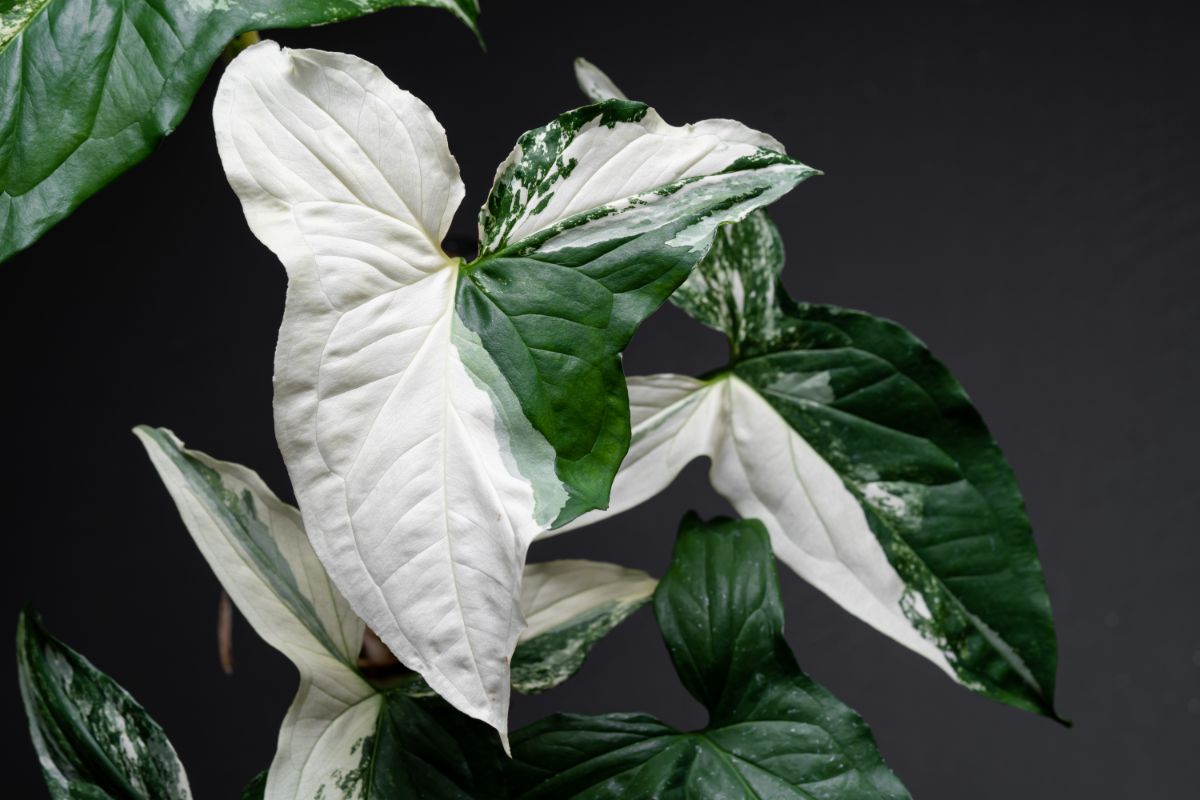
| Plant name: | Syngonium Podophyllum ‘Albo Variegatum’ |
| Watering requirements: | Moderate, approximately once a week in spring and summer, and once every 10 to 14 days in fall and winter |
| Lighting requirements: | Bright, indirect light |
| Pet safe? | No |
| Average selling price: | $25 to $100 |
Another arrowhead variant, ‘Albo’, has arrow-shaped leaves with plenty of variegation and pink stems. Leaves may just have a bit of white coloration, or they can be completely white and everywhere in between. The more white leaves a particular plant has, the more expensive it will be.
Like other arrowheads, ‘Albo’ is native to Brazil and Bolivia; however, the variegation patterning has been mostly developed by growers using selective growing practices. When fully grown, plants will generally reach about 14” in height and can be allowed to sprawl or trellised and pruned for a more compact look.
11. Calathea Lietzei ‘White Fusion’

| Plant name: | Calathea Lietzei ‘White Fusion’ |
| Watering requirements: | Moderate, approximately once a week in spring and summer, and once every 10 to 14 days in fall and winter |
| Lighting requirements: | Bright, indirect light |
| Pet safe? | Yes |
| Average selling price: | $20 to $70 |
Calatheas are known for their colorful leaves, but ‘White Fusion’ takes it even further. This gorgeous houseplant almost looks like a painting, with boldly colored leaves with highly contrasting stripes of green and white. Leaves may also exhibit a slight pinkish blush and have pinkish-purple undersides for even more color.
Growing between 12 and 18” in height, ‘White Fusion’ is a moisture lover and does need a lot of humidity to maintain its appearance. For best results, try to keep your plant between 75 to 85% humidity. As high humidity can be difficult to maintain in some homes, placing your plant in a glass cabinet or other enclosure can help regulate moisture levels too.
12. Syngonium Podophyllum‘Milk Confetti’
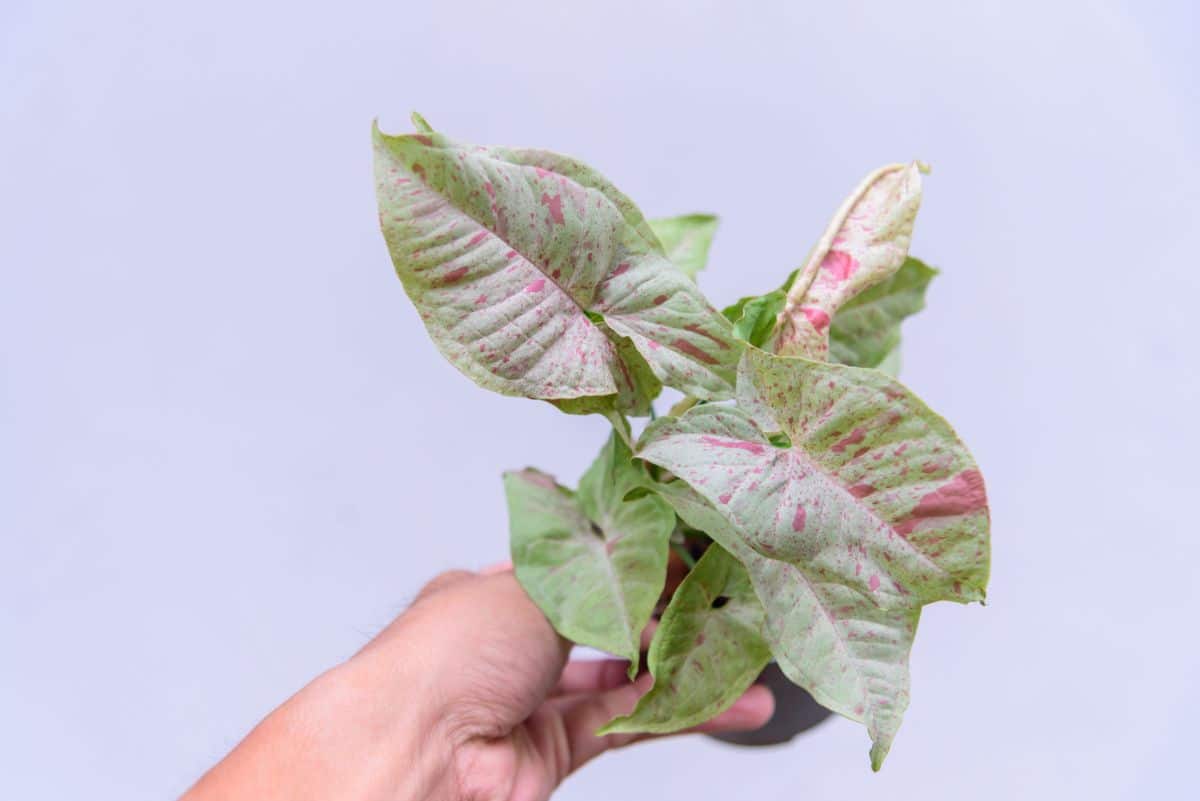
| Plant name: | Syngonium Podophyllum ‘Milk Confetti’ |
| Watering requirements: | Moderate, approximately once a week in spring and summer, and once every 10 to 14 days in fall and winter |
| Lighting requirements: | Bright, indirect light |
| Pet safe? | No |
| Average selling price: | $25 to $100 |
A truly spectacular plant, ‘Milk Confetti’ offers a bit of feminine charm with white to pale green leaves ornamented with pops of bubblegum pink coloring. Leaves are arrow-shaped and develop more pink tones as they age. In fact, if you’re lucky, some leaves may turn entirely pink!
As with other arrowheads, ‘Milk Confetti’ grows rapidly and can benefit from trellising. While standard arrowheads can tolerate some shade, increasing the amount of indirect light your plant receives will benefit the leaves’ variegation. This plant can also be readily propagated in water or soil for even more gorgeous leaves!
Best places to purchase rare plants
If you’re very lucky, you may be able to find these variegated plants at your local nursery. Sometimes, non-variegated houseplants will also spontaneously produce variegated leaves too! But if you’re determined to get your hands on one of these beauties, looking online is usually the best bet.
Some of the best places to find rare plants include:
- Etsy
Many sellers specialize in only selling houseplants, and they’ve perfected the art of propagation and careful plant shipping. Often, sellers sell smaller plants or rooted cuttings, but some sellers do offer full-grown plants too.
Because Etsy sellers are independent, be sure to check sellers’ reviews prior to purchasing anything and look for sellers who have a good reputation for fast shipping and healthy plants.
Logee’s is a plant nursery that has a wide variety of rare plants, including variegated offerings. While they are based out of Connecticut, they are willing to ship their plants. They’ve also been in operation since 1892 and are much beloved in the houseplant community.
- Amazon
Surprisingly, Amazon has a wide range of rare and variegated plants on offer. As with Etsy, it’s important that you check sellers’ reviews prior to purchase to make sure sellers’ are selling quality products. You can find plants like Syngonium ‘Albo’ or ‘Pink Princess’ quite easily; however, some of the very rare specimens will be harder to find.
Pro tip: If you live in a cooler region, be sure to ask about shipping prior to purchasing your plants in winter. Some sellers are happy to add extra insulation or heating packs to your package to make sure your plants stay warm enough during their travels.
Tips on maintaining variegated plants
Picking up a rare plant can be incredibly exciting! But once you’ve added your new find to your collection, you’ll want to maintain proper care techniques to ensure your new addition continues to look its best. Below are some of our top tips for maintaining variegated plants.
Lighting
While proper lighting is important for all plants, it’s particularly essential for variegated varieties.
Because of their variegation, variegated plants don’t have as much chlorophyll in their leaves, which can make them more sensitive to bright light and sunburn. For this reason, most variegated plants should be kept in bright, indirect light -- not full sun. If your plant is getting too much light, adding a sheer curtain can help protect tender leaves.
Inadequate light can also cause problems with leaf variegation. Specifically, low light can cause plants to lose their variegation or even revert to solid green leaves. So, make sure your plants are getting plenty of dappled light!
Watering
Be sure to follow proper watering instructions for any houseplants you keep in order to avoid issues like root rot or crispy and browning leaves. Variegated plants can also be a bit more sensitive to chemicals in tap water, so it can sometimes be beneficial to only water variegated specimens with rainwater or distilled water.
Fertilizer
As with chemicals in tap water, variegated plants can be more sensitive to fertilizer. For this reason, always follow proper fertilizing instructions for your plants and opt for organic fertilizers whenever possible, as they tend to be better tolerated. If in doubt, you can also dilute fertilizers to half-strength prior to application.
Humidity
Low indoor humidity can cause a lot of problems for houseplants, but leaf drops and browning or crispy leaves are the most common issues. If you have variegated plants, you definitely don’t want their leaves to be damaged by low humidity. So, try adding a humidifier to your grow room or place a pebble tray beneath individual plants.
Pests
Pests, like spider mites and thrips, can wreak havoc on plant leaves. To keep your plants growing healthy, be sure to check your houseplants from time to time for any signs of pests -- such as yellowing leaves, stippled leaves, or visible webbing from spider mites.
If you detect any pests, treat your plants as soon as possible with an organic insecticidal soap or neem oil spray.
Frequently Asked Questions
Yes! Variegation results either from a plant’s genetics or from a random mutation (chimeric). Chimeric variegation is very rare and occurs in about 1 in 100,000 plants.
If you love the variegated look but don’t want to spend the big bucks, some plants are naturally variegated. Check out plants like snake plants, rattlesnake plants, or ‘White Jewel’ dracaena.
Forcing a plant to variegate is very difficult and can’t be done at home. Instead, most variegated plants are produced either from parent plants that were variegated themselves or from variegation mutations that occurred randomly.
It can! Chimeric variegation is not stable and can revert to solid green leaves in low-light settings. Providing plants with plenty of bright, indirect light can promote variegation while protecting delicate leaves from too much bright sun.
Proper lighting is key for variegated leaves. Variegated leaves don’t have as much chlorophyll, so they can be more sensitive to damage from the bright sun. On the other hand, the bright, indirect sun can support leaf variegation without overwhelming your plant.
Yes, monsteras can randomly variegate, but it is rare. Random (chimeric) variegation occurs in about 1 in 100,000 plants.
Summary
If you’re on the hunt for a new and unique houseplant, variegated plants are the way to go. These stunning specimens have all the leaf colors you could want, and they are sure to impress any visitors to your home.
While it can be difficult to find a variegated plant, searching for the perfect plant is part of the fun of houseplant collecting! And, if you manage to find a rare specimen, you may be able to successfully propagate it to create even more colorful plants for your home or to share!
We hope you liked this article! If you’d like to read up on more houseplant varieties to try, check out our piece on humidity-loving plants for even more inspiration.

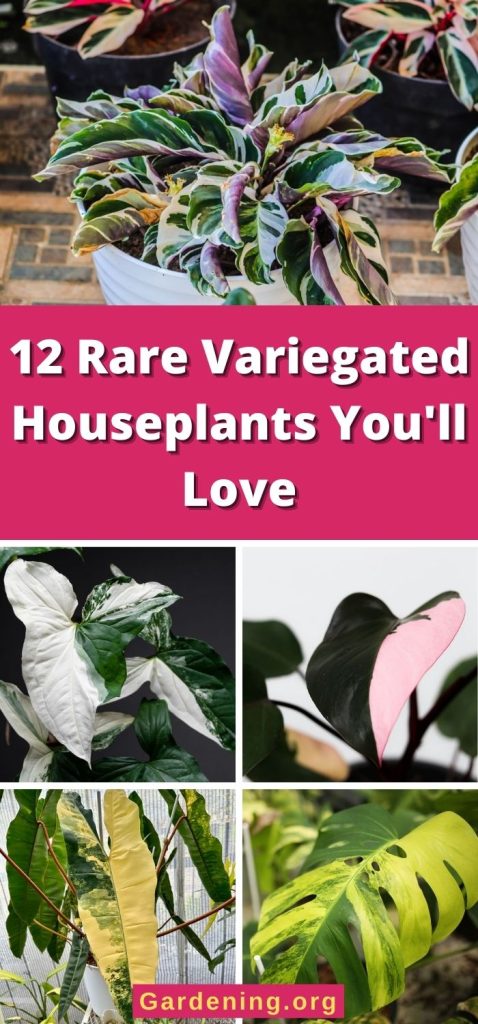


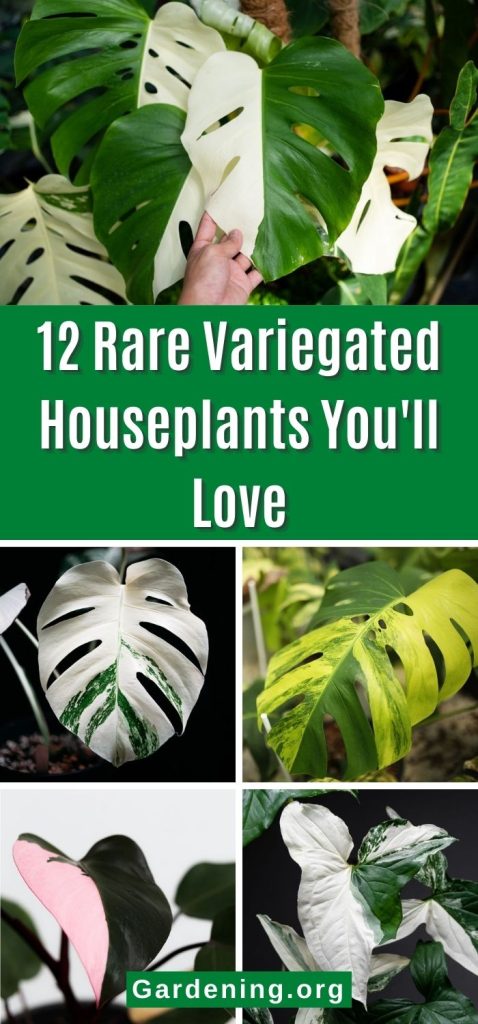
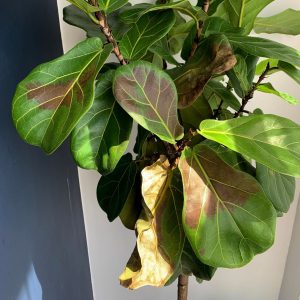
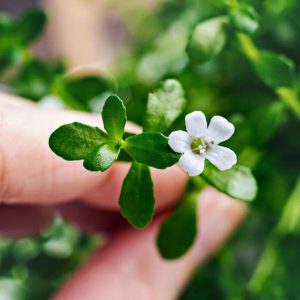
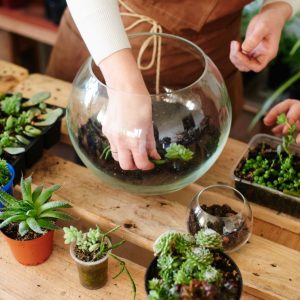
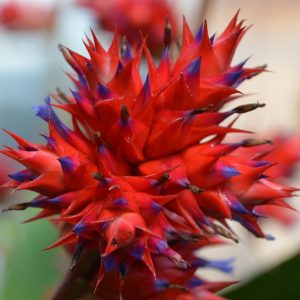
Leave a Reply